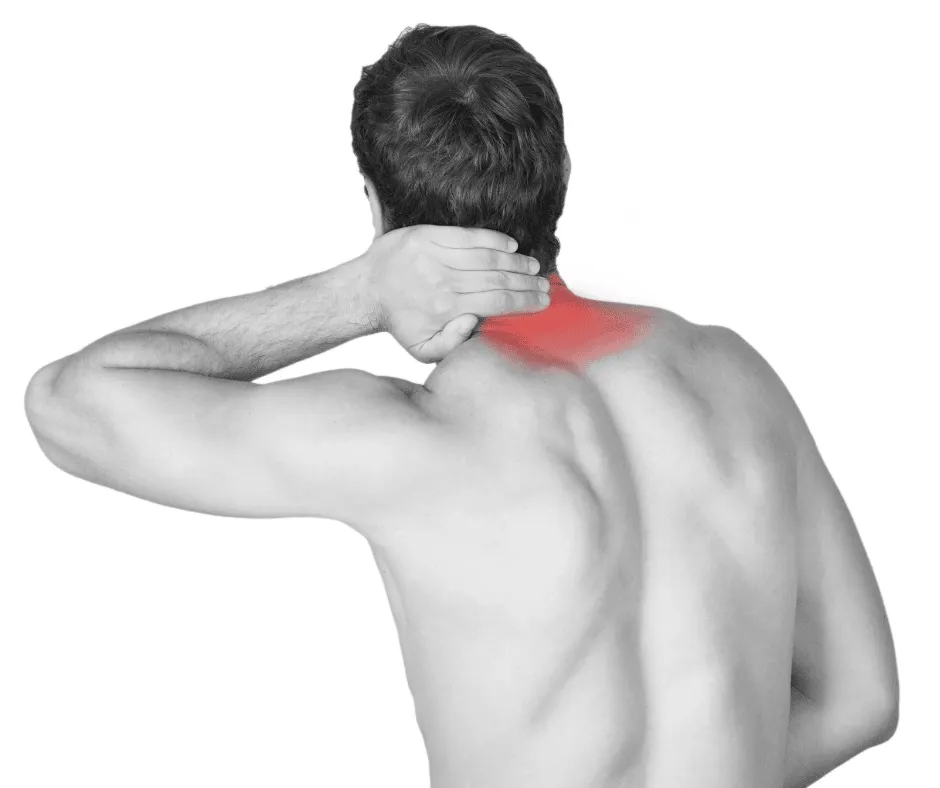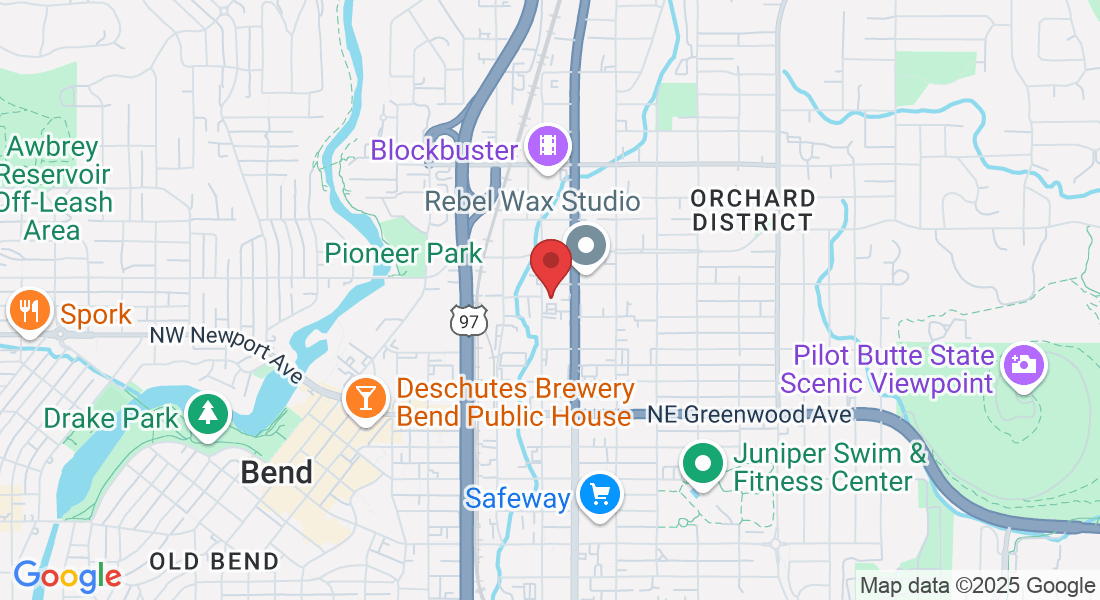Neck Pain Relief
Living Life Shouldn't Be Such a Pain in the Neck
Are you one among the millions experiencing "neck pain" and seeking relief? Neck pain is an everyday battle for roughly 10-20% of U.S. adults, leading to work absences, diminished life quality, and restricted physical activities. Consider us your guide, providing essential knowledge about neck pain and illustrating how we can assist you in restoring your well-being.
At PhysioFit, we are committed to delivering well-rounded neck pain treatments, expertly designed to align with every patient's specific condition and requirements. Our practice is rooted in a science-based, exercise-centric methodology of physical therapy, centered around individualized care plans for pain relief. Our vision transcends the mere alleviation of your neck discomfort; we strive to enhance your holistic health, diminish the chance of chronic or recurrent pain, and expedite your return to your routine activities.
What You Should Know
The most frequent injury resulting from car accidents is neck pain, accounting for nearly half, or 49%, of all vehicular injury cases.
Persistent neck pain may cause an array of complications, including depression, tension in relationships, anxiety, issues at work, hindrance in day-to-day tasks, and excessive tiredness.
Neck discomfort ranks third as a source of chronic pain.
A proper diagnosis of a neck problem involves a thorough evaluation from a professional.

The Most Common Causes of Neck Pain
Neck pain, a common complaint that can arise from various sources, often disturbs the delicate balance of daily life. Whether it's the natural aging process, physical strain, mental stress, traumatic injury, abnormal growths, or an underlying health condition, the origin of neck pain can be multifaceted. Understanding these potential causes is a crucial step towards effective treatment and relief.
Neck discomfort can be attributed to several factors:
Age-related Deterioration: Aging can lead to natural wear and tear of the cervical spine, leading to degenerative conditions like osteoarthritis or spinal stenosis, which can provoke neck pain. Persistent stress and repeated movements can weaken spinal disks, potentially causing a herniated disk or a pinched nerve.
Physical Exertion: Repetitive or strenuous activities can overstrain neck muscles, resulting in stiffness and pain. Factors like poor posture, weak abdominal muscles, and excess body weight can misalign the spine, contributing to neck discomfort. Long hours spent in front of a computer, straining the neck, is a common contributor to neck pain.
Psychological Stress: Stress-induced muscle tightening can lead to neck stiffness and pain. Many individuals may unconsciously tense their neck muscles during periods of stress or agitation, only realizing it when the neck begins to hurt.
Injury: Trauma can damage muscles, ligaments, disks, vertebral joints, and nerve roots in the spinal cord, causing neck pain. Whiplash, a common neck injury resulting from car accidents, often leads to neck discomfort.
Abnormal Growths: Tumors, cysts, and bone spurs can exert pressure on neck nerves, inducing pain.
Underlying Health Conditions: Certain health conditions, including meningitis, rheumatoid arthritis, and cancer, may present neck pain as a symptom.
If any of this information resonates with your current situation, we urge you to schedule an appointment with us immediately. Don't let hip pain diminish your life quality - allow us to help you embark on the path to relief today.
Strategies for Negating Neck Pain
Strategies can be implemented to mitigate neck discomfort related to muscle strain or tension. They are as follows:
Adopt Healthy Posture Habits: Arrange your devices such as computers and phones to prevent neck strain or slouching while using them. Ensure your shoulders are aligned, your back is straight while seated, and your neck isn't strained. Fine-tune your car seats for proper posture during transit.
Optimize Your Sleeping Position: Retain good posture even during sleep. Use a pillow for head support to align your head and neck with your body if you sleep on your side or back. For back sleepers, consider placing a pillow under your knees to lessen lower back pressure. Avoid stomach sleeping with a turned head.
Stay Mobile: Utilize exercises meant for neck pain relief to also prevent it. If your job requires prolonged sitting, incorporate occasional breaks for stretching and mobilizing, including neck muscles.
Avoid Shoulder-Borne Heavy Loads: Refrain from carrying substantial weights like book bags or suitcases on your shoulder. Opt for wheeled luggage or bags instead.
Strengthen Your Upper Back Extensor Muscles: Age-related weakening of the upper back is normal, causing the shoulders to stoop and the head to tilt forward. This posture puts extra strain on your neck and upper back.

Common Symptoms of Neck Pain
Experiencing headaches
Sensation of numbness or a tingling feeling, akin to 'pins and needles', in your shoulders or arms.
Inability to rotate the neck or incline the head
Rigidity in the neck, shoulder, and upper back regions
A radiating pain extending from the neck down to the shoulders or arms
An intense sensation of stabbing or burning
A continuous, nagging discomfort
Remember, if you resonate with any of the symptoms or conditions mentioned, we highly recommend making an appointment with us for a thorough evaluation and personalized treatment plan.
Please Note: The information provided on our website is intended for general education and is not a substitute for professional medical advice. Each individual's situation and body is different. Therefore, what may work for one person may not work for another. We care about your well-being and advise you to reach out to us to discuss your specific needs before implementing any advice from our website.
Your Source for All Things Physical Therapy in Bend Oregon
The PhysioBlog

Unlock Your Full Athletic Potential: How Physical Therapy Helps Enhance Your Athletic Performance
Please Note: The information provided on our website is intended for general education and is not a substitute for professional medical advice. Each individual's situation and body are different. Therefore, what may work for one person may not work for another. We care about your well-being and advise you to reach out to us to discuss your specific needs before implementing any advice from our website. If you’d like to explore this more or would like to schedule a time with a physical therapist in Bend Oregon, contact us at PhysioFITBend.com
Key Takeaways:
Physical therapy plays a crucial role in unlocking an athlete's potential by addressing and rehabilitating injuries, preventing future injuries, and optimizing performance through targeted exercises and treatments.
Physical therapists serve as valuable performance partners for athletes, providing individualized assessments, treatment plans, and ongoing support to help athletes reach their peak performance, recover from injuries, and maintain overall physical well-being.
Incorporating physical therapy into an athlete's training regimen can lead to improved athletic performance, increased strength and flexibility, enhanced endurance, and better overall movement mechanics, allowing athletes to perform at their highest level and reduce the risk of injuries.
Introduction
Physical therapy is more than a recovery tool; it's a key strategy to enhance athletic abilities, optimizing performance, and pushing boundaries. By addressing imbalances, improving biomechanics, and preventing injuries, athletes can unlock their full potential. Through personalized treatment plans and targeted exercises, physical therapy empowers individuals to achieve peak performance and surpass their goals.
Taking a comprehensive approach, physical therapy targets specific areas of improvement, such as strength, flexibility, and agility, all of which are essential for athletic performance. By focusing on these elements, athletes can develop a solid foundation that allows them to excel in their respective sports.
In addition to enhancing physical attributes, physical therapy also plays a crucial role in injury prevention. Through a combination of targeted exercises, corrective techniques, and education on proper form and technique, athletes can reduce the risk of injury and stay in top shape.
Moreover, physical therapy offers significant benefits beyond injury prevention and performance enhancement. It fosters overall well-being by improving cardiovascular health, boosting mood, and enhancing mental clarity. This holistic approach to athletic development ensures that athletes not only reach their peak performance but also maintain a balanced and healthy lifestyle.
Don't miss out on the opportunity to maximize your athletic abilities. Incorporating physical therapy into your training regimen can unleash your true potential, enabling you to achieve unparalleled results. Take the first step towards excellence and elevate your performance to new heights with the help of physical therapy. Start your journey today and witness the transformation in your athletic capabilities.
The Importance of Physical Therapy for Athletes
Physical therapy plays a crucial role in optimizing athletic performance. By utilizing specialized techniques and treatments, athletes can enhance their physical abilities and prevent injuries. Through targeted exercises and rehabilitation programs, physical therapy helps athletes improve strength, flexibility, and endurance. Additionally, it aids in the recovery process, allowing athletes to return to their sport quickly and safely.
Key Benefits:
Strength Enhancement: Targeted exercises to build muscle strength, essential for power and performance.
Flexibility Improvement: Techniques to increase flexibility, allowing for greater range of motion and reduced injury risk.
Endurance Training: Conditioning programs to improve stamina, enabling athletes to perform at their best for longer periods.
Injury Recovery: Specialized rehabilitation plans to help athletes recover from injuries and return to their sport with confidence.
Don't miss out on the benefits of physical therapy for athletes - unlock your full athletic potential today.

The Role of Physical Therapists as Performance Partners
Physical therapists play a crucial role as performance partners in optimizing athletic potential. Their expertise in injury prevention, rehabilitation, and enhancing performance can greatly benefit athletes.
Collaboration and Customization:
Assessment and Diagnosis: Physical therapists assess biomechanical imbalances and weaknesses, leading to personalized treatment plans.
Performance Optimization: Through targeted exercises and training programs, physical therapists enhance overall functional movement and performance.
Injury Prevention: By analyzing movement patterns and identifying risk factors, physical therapists design programs to minimize future injuries.
Team Collaboration: Physical therapists work closely with coaches, trainers, and other healthcare professionals to develop comprehensive care plans, ensuring a holistic approach to athlete care.
Conclusion: Unlock Your Full Athletic Potential
Physical therapy has the potential to unlock significant improvements in athletic performance. By addressing specific weaknesses, imbalances, and injuries, athletes can optimize their training and reach new heights in their sport.
What sets physical therapy apart is its individualized approach. Each athlete's needs and goals are carefully assessed, ensuring a tailored treatment plan that focuses on their specific requirements. Whether it's rehabilitating an existing injury or preventing future ones, physical therapy plays a vital role in optimizing athletic performance.
Embrace the power of physical therapy and take your athletic performance to the next level. With expert guidance, personalized treatment, and a focus on overall well-being, physical therapy can be the key to unlocking your true potential. Start your journey with physical therapy today, and experience the transformation in your athletic capabilities.
Five Facts
✅ Physical therapy is an essential part of any well-designed training program to prevent injuries and optimize sports performance.
✅ Regular physical therapy sessions can help improve flexibility, strength, and balance, reducing the risk of injury.
✅ Physical therapy can also improve an athlete's form and efficiency in their chosen sport, leading to better performance.
✅ In addition to physical benefits, physical therapy can help reduce both physiologic and mental stress through techniques like massage therapy.
✅ If an injury does occur, physical therapy can aid in rehabilitation and help the athlete come back stronger than before by addressing underlying weaknesses and imbalances.
FAQ
Question 1: Can physical therapy help with injury recovery?
Yes, physical therapy is essential for injury recovery. It helps relieve pain, improve movement, and strengthen muscles, allowing athletes to recover and get back in the game faster.
Question 2: How does physical therapy optimize sports performance?
Physical therapy plays a crucial role in optimizing sports performance. It can identify weaknesses that may lead to injury or suboptimal performance and develop tailored exercises to improve flexibility, strength, balance, and coordination, resulting in enhanced athletic performance.
Question 3: Is physical therapy similar to regular checkups at the dentist?
Yes, physical therapy is similar to regularly scheduled dental checkups. Just as regular dental visits help maintain oral health, physical therapy appointments can prevent injuries and keep athletes in optimal shape. Both approaches follow the idea of prevention being more effective than cure.
Question 4: How does physical therapy help avoid injuries?
Physical therapy helps avoid injuries by addressing muscle weaknesses, limited range of motion, and balance issues. Through targeted exercises and assessments, a physical therapist can identify areas of improvement and provide guidance on how to prevent injuries during sports activities.
Question 5: Can physical therapy relieve pain and improve movement?
Absolutely! Physical therapy aims to relieve pain and improve movement. By assessing joint range of motion, muscle strength, and flexibility, physical therapists design exercises and treatments to alleviate pain and enhance overall movement capabilities.
Question 6: How can physical therapy help athletes come back stronger after an injury?
Physical therapy is the key to a successful comeback after an injury. It helps retrain the body through targeted exercises and addresses factors that contributed to the injury, such as weakness or overuse. By doing so, athletes can not only recover but also avoid similar injuries in the future, coming back stronger than before.
Please Note: It's important to note that any exercises or techniques that are shared should be performed under the guidance of a qualified bend physical therapy expert to ensure correct technique and to prevent injuries. A physical therapist can provide a customized exercise program based on the individual's fitness level, goals, and any existing injuries or conditions. If you’d like to explore this more or would like to schedule a time with a physical therapist in Bend Oregon, contact us atPhysioFITBend.com
Copyright PhysioFIT 2025 . All rights reserved


